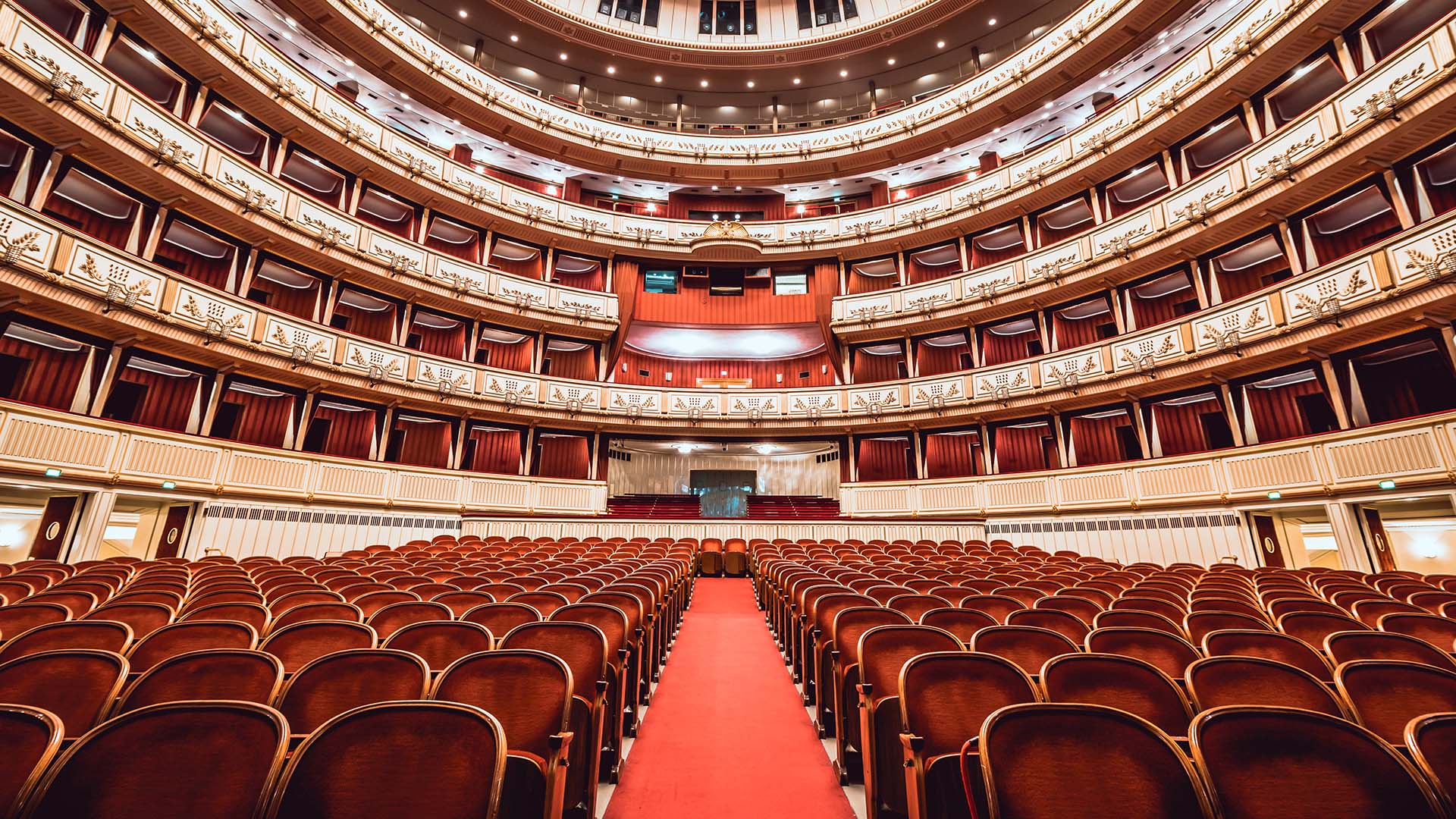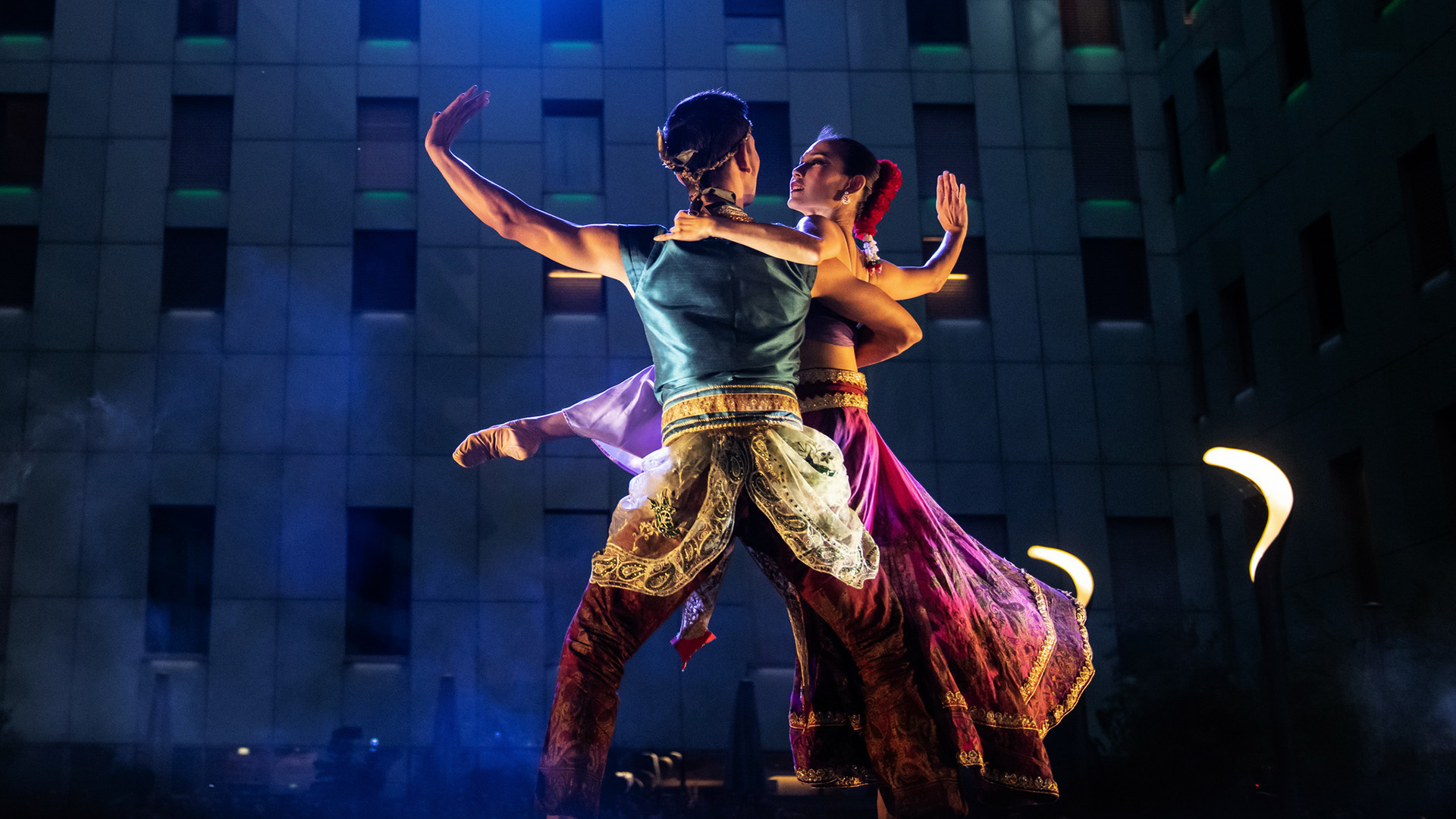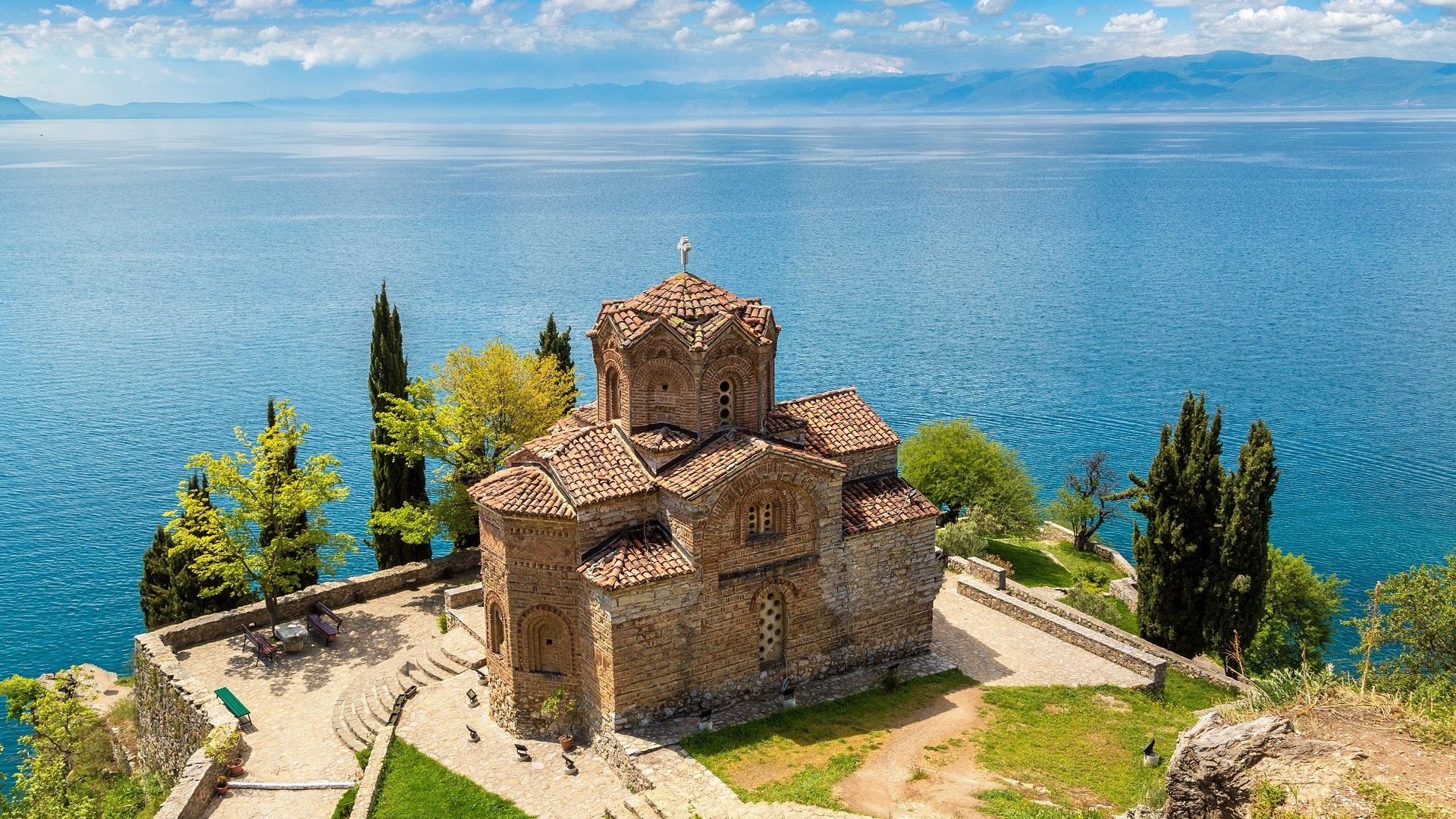
Discover North Macedonia’s stunning Lake Ohrid and many hidden gems in the Balkans. (Photo: Getty Images)
Culture + StyleDiscover the Cultural Riches and Balkan Beauty of Serbia, Albania and North Macedonia
By Norm LongleyNestled in the heart of the Balkan Peninsula, Serbia, Albania and North Macedonia are three of Europe’s most precious hidden gems. Serbia is dominated by its pulsating capital Belgrade, beyond which monastery-dotted mountains offer a thrilling dose of adventure sports and culture.
Further south, Albania packs in jaw-dropping mountains and pristine beaches, Roman ruins and Ottoman-era towns.
Neighboring North Macedonia, meanwhile, lays claim to one of Europe’s most unsung wonders: the magnificent Lake Ohrid.
Explore a trio of captivating capital cities
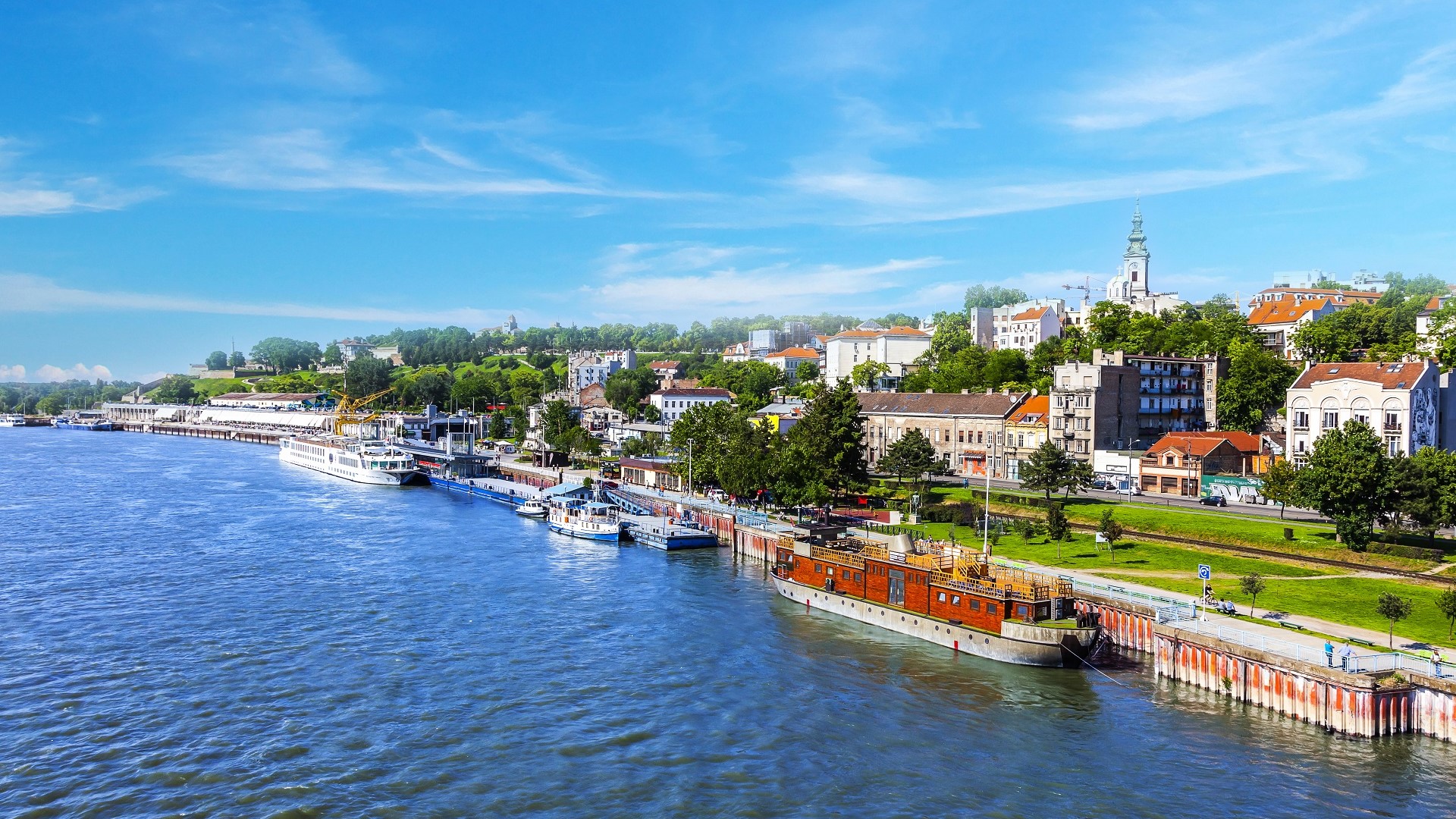
Central Albania’s Tirana has evolved into a truly cosmopolitan European capital, with Ottoman architecture memorably juxtaposed with a kaleidoscope of colorful modern buildings. The city’s stand-out site is the Et’hem Bey Mosque, a late-18th-century masterpiece sporting a beautifully frescoed exterior.
Take time to visit the city’s pulsating daily market, which sprawls north of the Sheshi Avni Rustemi roundabout, before enjoying a night out on the town in the fashionable Blloku district. Stay the night at the Tirana Marriott, whose dazzling white-on-white rooms promise superb views over the Air Albania Stadium.
Belgrade, meanwhile, simply fizzes with energy. The Serbian capital’s mighty fortress, wide-ranging museums and joyous nightlife all compete for your time and attention.
The city’s one essential stop is Skadarlija, a bohemian-feeling street that was once the haunt of prominent writers, artists and actors, and is today packed with galleries, antique shops and traditional restaurants.
In stark contrast, the Belgrade Waterfront district gleams with new glass-and-steel projects housing an array of river-view bars and the city’s most exclusive shops.
It’s when day turns to night, though, that Belgrade really comes into its own.
Cetinjska 15 is a cosmopolitan cluster of bars and clubs occupying a derelict brewery. Here you’ll find Zaokret, an old factory workers’ canteen transformed into a hip bar, and the industrial ambience of Kenozoik, which specializes in heavy sonic beats.
Enjoy some well-deserved relaxation time after all this activity with a stay at the Courtyard Belgrade City Center, whose striking glass facade graces a prime spot just off the city’s main square.
On-site restaurant Credo offers a delicious range of international and Serbian dishes. Alternatively, treat yourself to one of the Moxy Belgrade‘s artfully designed rooms. A cocktail in the hotel’s industrially chic bar is a great way to start a night out.
Encircled by a sweeping bowl of snow-capped mountains, North Macedonian capital Skopje also retains vestiges of its rich Ottoman past — notably the Čaršija bazaar district, location of the intricately decorated Mustapha Pasha mosque and copper-domed Daud Pasha bathhouse.
More remarkable still is the Art Bridge, recently enhanced with 29 statues of Macedonian artists and musicians, though for pure visual drama, don’t forget to feast your eyes on the colossal Alexander the Great monument in Macedonia Square.
Just off the square lies the Skopje Marriott Hotel. Housed in a handsome building, the hotel offers comfortable rooms, a gorgeous pool and the Dandelion Spa & Health Club. Book a spacious suite to gain exclusive access to the hotel’s private lounge.
Sample local delicacies, fine wines and fiery spirits
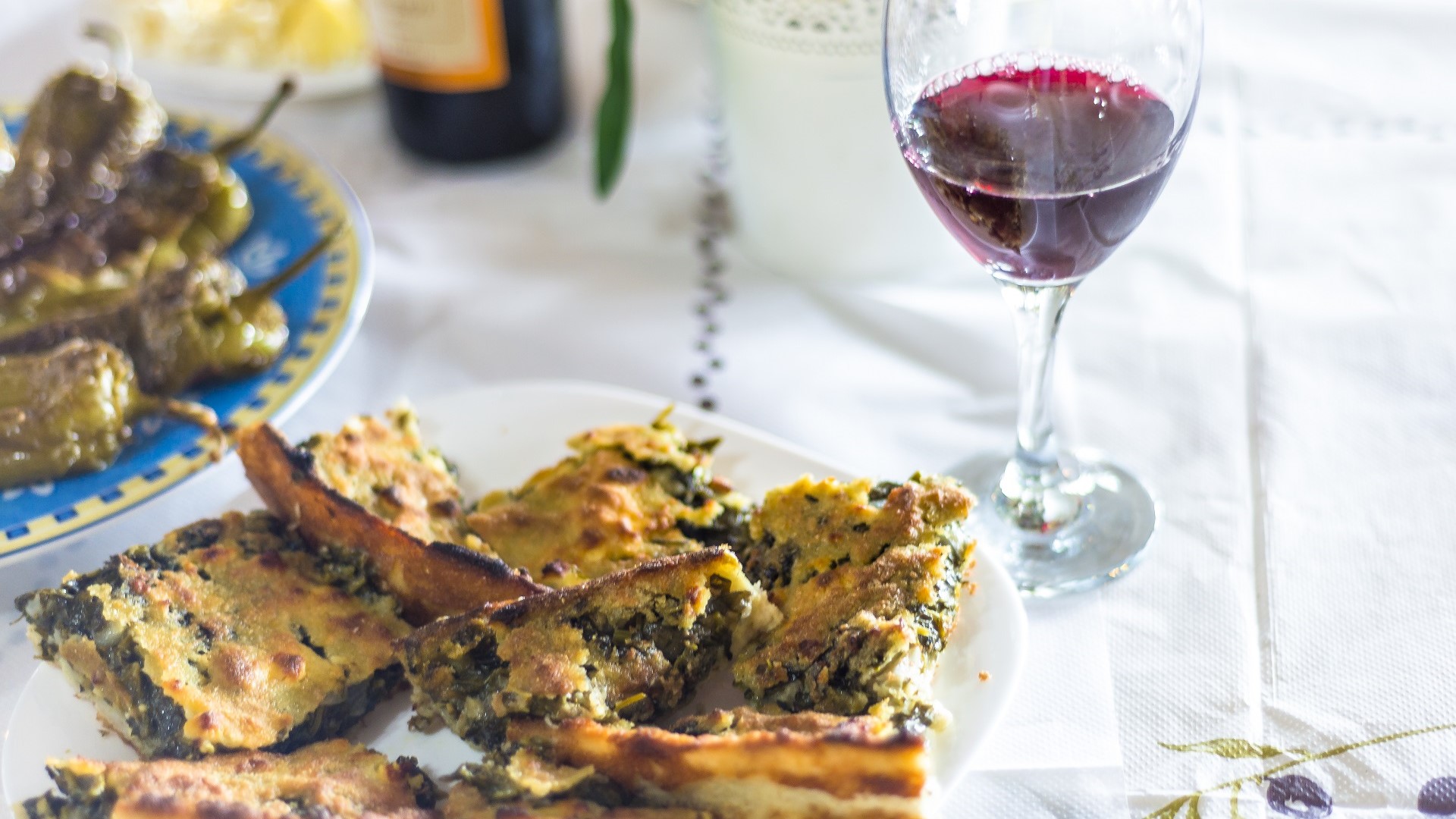
Serbia’s most famous dishes revolve around meat — take your pick from ćevapčići (rissoles of spiced minced beef), pljeskavica (a generously sized hamburger), vešalica (boneless pork loin) and ražnjici (a skewer of meats).
To sample these specialties, try Belgrade’s To Je To, which many locals regard as the finest spot in town for dishes like this. The national drink is rakija, a powerful fruit brandy drunk neat; the classic version is šljivovica (plum), but they come in many flavors, including pear, apricot and quince.
The Albanian kitchen draws on elements of Slavic, Turkish and Italian cuisines, spit-roasted lamb is the go-to dish of choice, while a glass of red Kallmet wine with a slice of spinach byrek — flaky pastry pie — makes a fine snack. Coffee plays a big role in Albanian culture, the preferred method of production being Turkish coffee, with thick grounds settled at the bottom.
The classic North Macedonian dish, meanwhile, is sarma, stuffed cabbage or vine leaf rolls, best eaten with a glass or two of North Macedonian wine. To sample excellent versions of both, head to Skopje’s Skopski Merak, a smart restaurant that rates highly amongst the locals.
Red wines predominate in North Macedonia, with production centered on two exceptional autochthonous varieties, Vranac and Kratosija; one of the country’s top wineries is Popova Kula in Ohrid.
Experience the Balkans’ biggest festivals

The coolest festival in the Balkans, bar none, is EXIT. This four-day musical extravaganza is held within the atmospheric grounds of the Petrovaradin Fortress in Novi Sad, Serbia’s engaging second city; 2023 headliners included The Prodigy, Wu-Tang Clan and Skrillex. South of Belgrade, August’s Guca Trumpet Festival is a cacophonous celebration of trumpet-playing as performed by some of the world’s greatest exponents of the instrument.
One of Albania’s most exciting festivals is Kala, perhaps the most enjoyable of several small boutique dance festivals that take place along the Albanian Riviera. Kala takes over Dhërmi’s silky sands at the end of May. August’s Korca Beer Fest is another huge Albanian celebration, a five-day event that sees the little city of Korçë packed with music and beer lovers.
North Macedonia’s most celebrated gathering is the Ohrid Summer Festival. Established in 1961, this joyous fusion of music, theatre and dance takes place along the shores of the country’s iconic lake. One for the purists, meanwhile, Skopje’s Jazz Fest features a stellar line up of musicians from around the world.
Immerse yourself in untouched landscapes and shimmering lakes
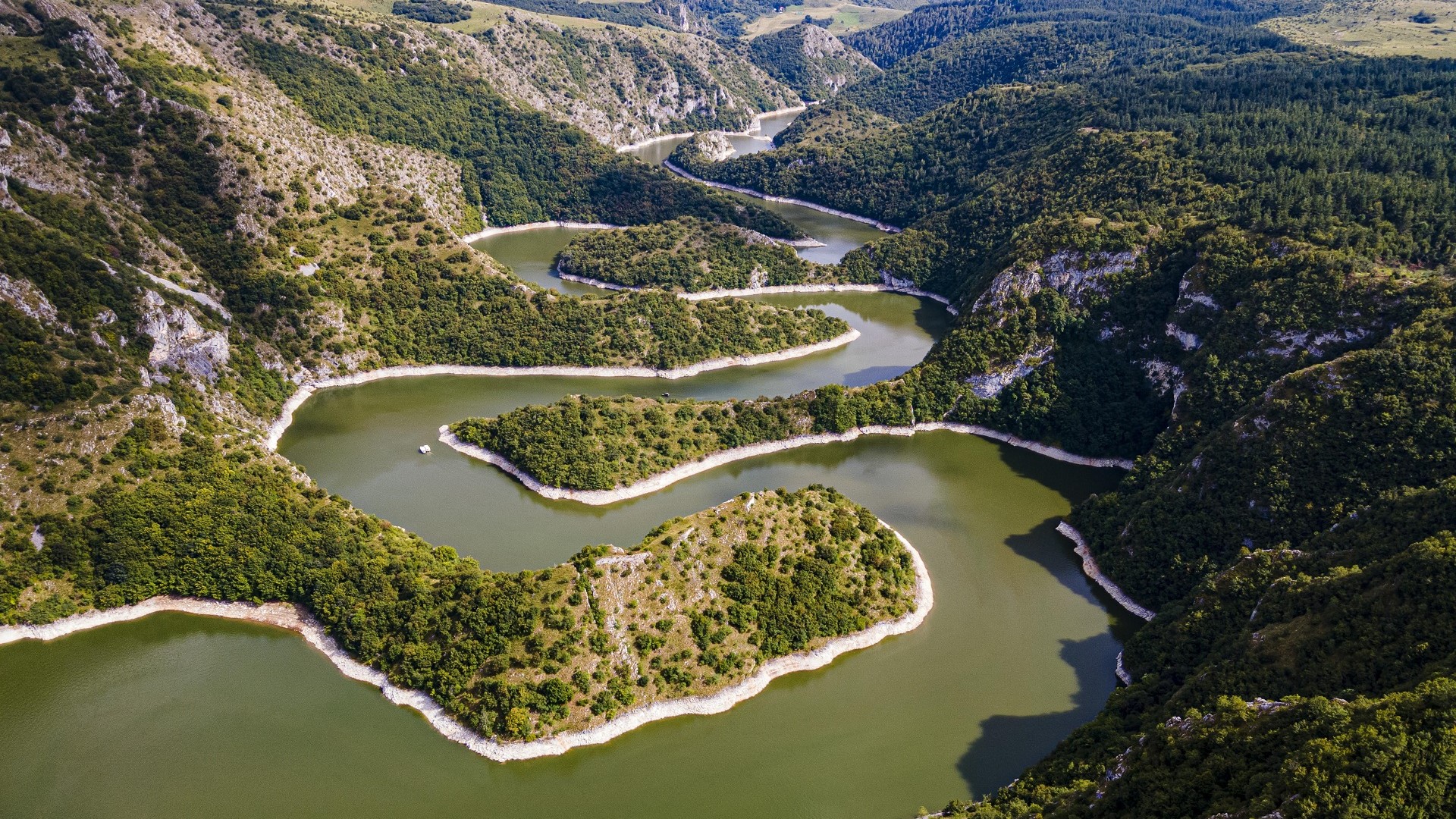
Serbia’s landscape is as varied as it is astonishing, from the hazy shimmer of Lake Palić on the Hungarian border to the breathless complex of stalactites and stalagmites that comprise the paleolithic-era Hadži Prodan Caves in Serbia’s central karst region.
For sheer spectacle though, the country’s rivers are hard to beat: the Uvac is defined by a series of magnificent horseshoe bends, while the Danube features the mighty Iron Gates, a formidable, cliff-lined stretch that nudges up along the Romanian border, are hard to beat.
All manner of adventurous pursuits beckon throughout the country’s mountainous central belt, including skiing on Kopaonik, canyoning in the Valjevo mountains, and kayaking on the Uvac River.
Anyone thirsting for a drop of culture won’t want to miss the country’s medieval monasteries, tucked away among the softly rolling hills of southern Serbia. These great 13th-century theatres of Orthodox religion — notably Studenica, Žiča and Sopočani — are revered for their brilliant frescoes.
Albania’s gorgeous, sun-soaked beaches — among them Dhërmiu and Drymadë — have become justifiably popular and should not be missed. But try to find time for the country’s mountainous hinterlands and the UNESCO-listed hillside villages of Berat and Gjirokastra. Keen hikers and climbers will enjoy tackling the memorably named Accursed Mountains, a region of wild, saw-toothed peaks bordering Montenegro.
If you have time for just one activity in Albania beyond Tirana, then make it a day trip to Butrint. This vast site distils more than three thousand years of successive civilizations into one remarkable open-air museum. You can range among towering Illyrian walls, ancient Greek amphitheaters and temples, Roman bath houses and Byzantine basilicas.
North Macedonia’s most celebrated natural wonder is UNESCO-listed Lake Ohrid. One of Europe’s oldest and deepest bodies of water, this magnificent mountain-fringed crystal expanse straddles the Albanian border.
Walkers, cyclists and swimmers should make for Mavrovo National Park, home to the picturesque 11th-century Sveti Jovan Bigorski Monastery, as well as bears, wolves and lynx. Activity-seekers will want to head for the awesome Matka Canyon, where you can hike, rock-climb and kayak. For snow sports, head to the slopes of Pelister or Mavrovo.





